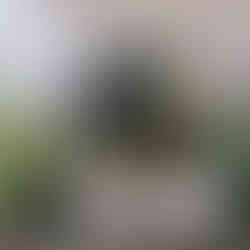A Day in Uji - Kyoto´s Tea Paradise
- Josefa-Lisa
- Feb 17, 2020
- 4 min read
Updated: Feb 20, 2020
When talking about Kyoto, most people think of the most famous temples and shrines such as Kyomizu-dera or Fushimi-inari as well as traditional houses with Maiko walking by.
However, Kyoto is also widely known for its green tea, so why not visit the place where it is coming from?

Uji

Uji is a city in the southern outskirts of Kyoto and most famous for it´s matcha. The cultivation of tea in this area was promoted by Shōgun Ashikaga Yoshimisu (1358-1408) and Uji became an important production and contribution center of superior quality green tea. It is the second largest tea plantation region of Japan.

I didn´t know about Uji until I was invited to go there with a friend. As the area seems not to be known as widely, so it is not crowded with tourists which I really enjoyed. All the famous places are just a short walk from the station, which makes them easily accessible. If you are interested in pre-modern Japanese literature, you might find the statue from Murasaki Shikibu writing the Genji-monogatari and the Genji-monogatari museum interesting.

Besides tea, Uji is famous for the Byōdō-in Temple, Ujigami Shrine, Kōshōji Temple and Uji Shrine. I´m going to introduce a few of these places to which we went as well as tea shops I enjoyed.
Byōdō-in Temple

This temple was initially built in 998 as a countryside retreat villa for Fujiwara no Michinaga, so it was not a temple at first. It was his son Yorimichi Fujiwara who in 1052 turned Byōdō-in into a temple. It was in 1052 because in Buddhism, there is a “mappo” (end-of-the-world-theory) and this year was seen as the beginning of “mappo”. This temple belongs to the Pure-Land sect.
In the following year he ordered the construction of the now most famous and beautiful feature, the Phoenix hall.


The hall got its name from the shape and the two phoenix statues on its roof. You can now see the hall on the 10 yen coins. Although Byōdō-in´s buildings were destroyed by fire etc. several times, somehow this hall has never been destroyed. The hall includes statues of Bodhisattvas sitting on clouds and a statue of the Amida Buddha (important in Pure Land Buddhism). However, if you want to enter into the hall you have to pay additionally 300 yen on top of the 600 yen entrance fee.
As you can see on many pictures, the phoenix hall is surrounded by a pond in which you can see it´s beautiful reflection. Unfortunatelly currently it is under construction (probably until March 2020), so the water is too little to see the reflection.
If you enter the treasure house, you can see the temple´s most valuable artifacts and information about Byōdō-in.
For more information about its history, feel free to click this link to the website.
Kōshōji Temple

Kōshōji Temple is a temple in Uji, where Buddhist monks are still living. The entrance fee is 500 yen, but definitely worth it as it is not only beautiful, you can also see every single part of it and take pictures of anything.

The formal name is “Buttoku-san Kannon Douri-in Koushou Hourin Zen-ji” and it was the first Soto Zen monastery founded at Fukakusa in the south of Kyoto in 1233. It´s founder is the Zen master Dogen, who is also the founder of Soto Zen after he came back from his studies in China. When he left Kyoto, the monastery had been devastated for a long time but rebuilt later at Uji in 1649.
When you enter, you can see the Yakuimon.

You first have to change into slippers. Then you can follow the path on the right which leads inside the temple. In the middle of the temples buildings, you can see the beautiful garden with zen elements.
When you enter the first building, you see a kind of tea room where it is possible to drink tea if you pay extra for it.

If you follow the path, you might be able to listen to the monks reciting sutras in the room on the right. It is not possible to look inside the room while they are in there.

But you can see every other room in the temple, including the bedroom and kitchen.
Uji Shrine


Uji Shrine is a small shrine adjacent to the Ujigami Shrine. Ujigami Shrine is believed to be the oldest shrine in Japan. Until the Meiji Restoration the both shrines belonged together and were called Uji Rikyū Shimmei (Hajimangū). In both shrines Uji-no-Wakiiratsuko and Emperor Ōjin and Nintoku are worshiped.
Mitsuboshien Kanbayashisannyu Honten

This green tea shop is about 500 years old and served 16 generations of the shogun family. They sell a variety of green teas, including high quality matcha whose tea leaves were picked by hand. They also have a small room where you can enjoy matcha tea and sweets such as matcha zenzai or mochi.

When we were about to leave, the owner started to explain the history of the store to us and showed us a small museum about it. The museum is for free and displays letters from the shogun and castles who ordered tea a long time ago. It was quite interesting! According to him, even the matcha first sold in many European countries came from this very shop.




































































Comments